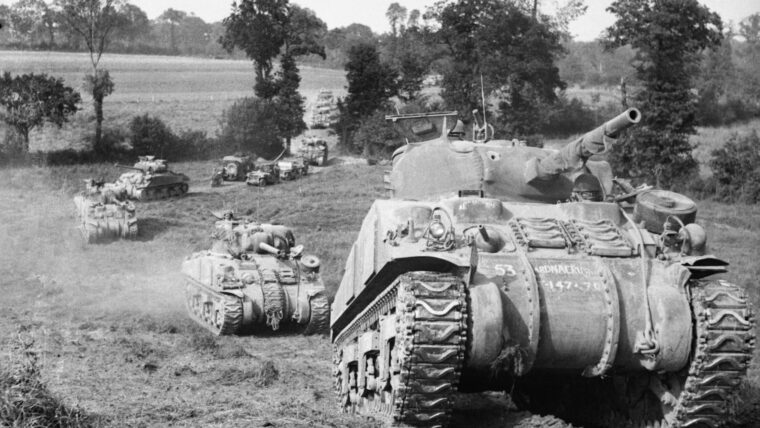
Dwight D. Eisenhower
The Irish Brigade in WWII
By Tim NewarkIt was a letter in the London Times that caught the attention of British wartime Prime Minister Winston Churchill. Read more

Dwight D. Eisenhower
It was a letter in the London Times that caught the attention of British wartime Prime Minister Winston Churchill. Read more
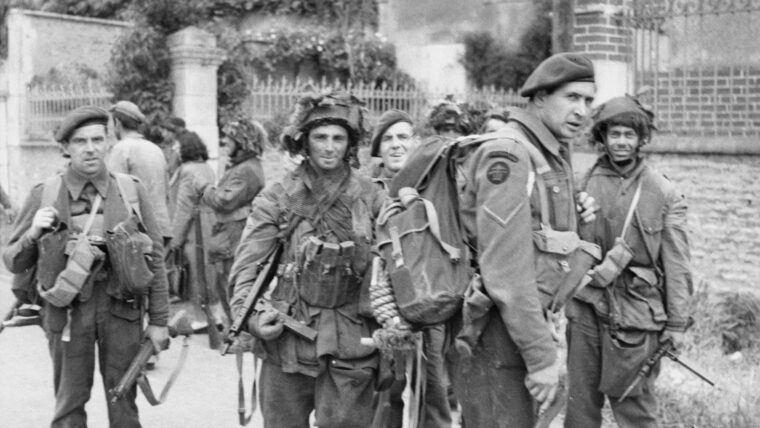
Dwight D. Eisenhower
After successfully fighting seasickness during the crossing of the English Channel, Lance-Corporal Ted Brooks of Number 48 (Royal Marine) Commando arrived on Nan Red Beach—which formed the left flank of Juno Beach—on the morning of June 6, 1944. Read more
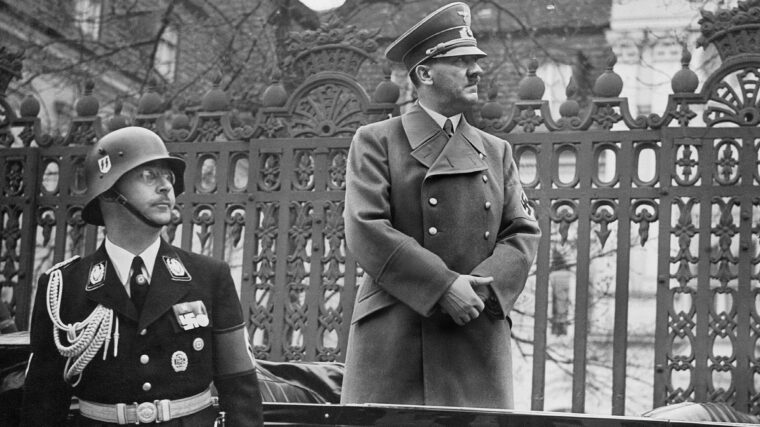
Dwight D. Eisenhower
On the evening of May 23, 1945, in the northern German state of Schleswig-Holstein, five men in a British Army jeep were driving down a dark road. Read more
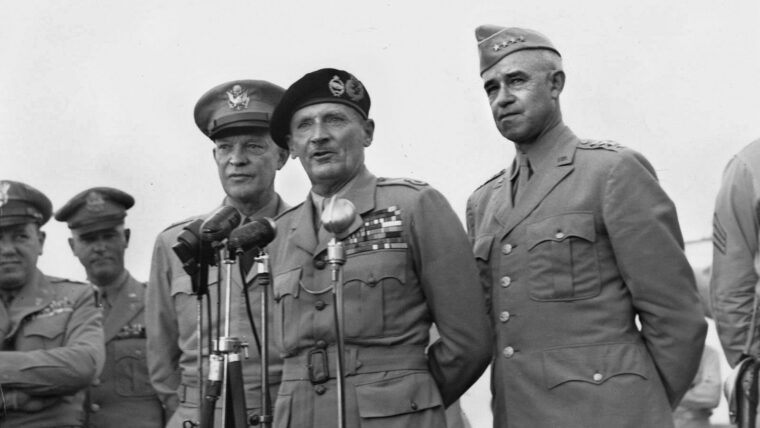
Dwight D. Eisenhower
With the exceptions of the Normandy invasion and the Battle of the Bulge, few other World War II battles in the European Theater have received more historical scrutiny than the Battle of the Falaise Gap. Read more
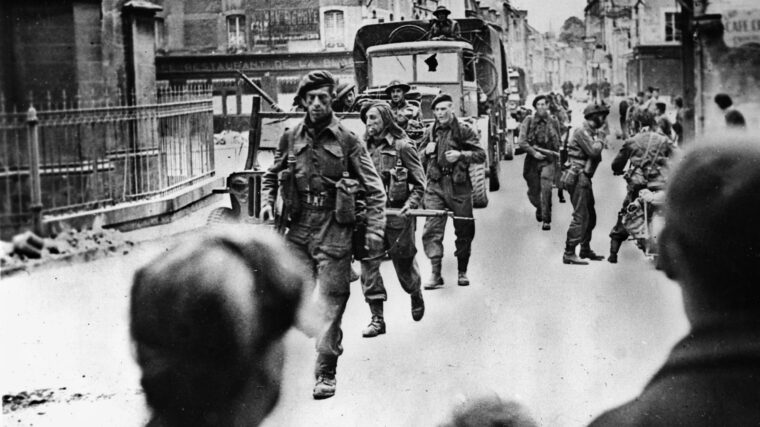
Dwight D. Eisenhower
“The big day came and we moved off to our positions. Shortly a huge bombing raid commenced on the town of Wesel, followed by an artillery barrage which virtually shook the very ground under us. Read more
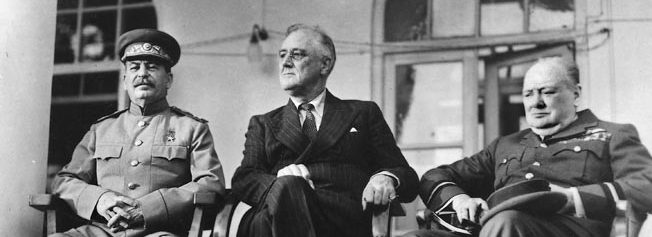
Dwight D. Eisenhower
World War II made a disparate trio of allies —British Prime Minister Winston Churchill, Soviet Marshal Joseph Stalin, and American President Franklin D. Read more
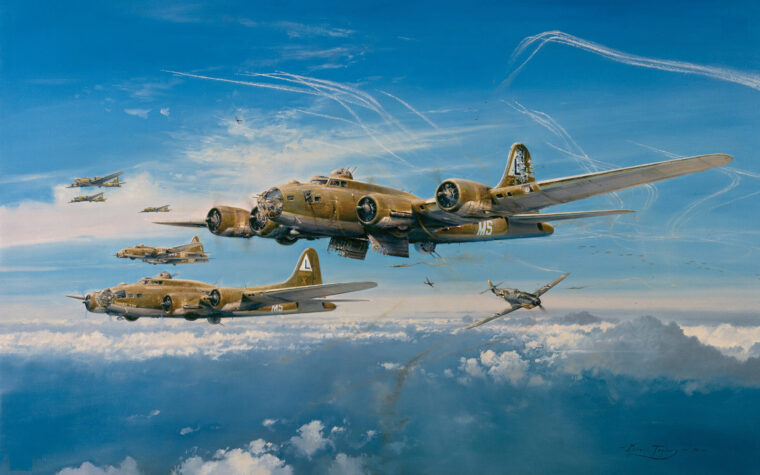
Dwight D. Eisenhower
For 33 months beginning in 1942, the U.S. Eighth Air Force and its precision daylight bombing strikes against German targets in Europe tried to pound the Third Reich into submission. Read more
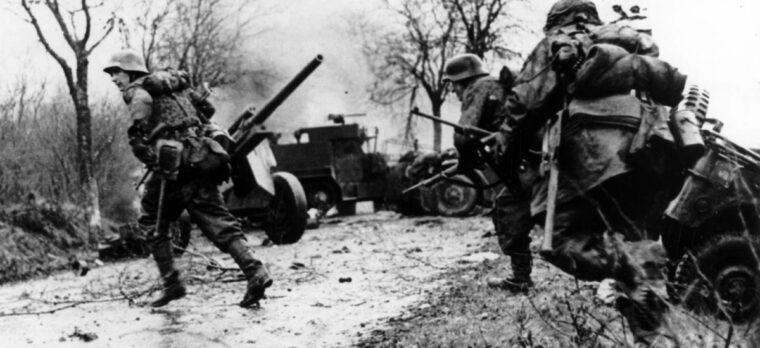
Dwight D. Eisenhower
An eternal grayness created a sense of constant gloom. The short, wintry days ended quickly, giving way to endless hours of dark, monotonous cold, and ever-present clouds of ghostlike fog crept slowly over the landscape, blocking all sight. Read more
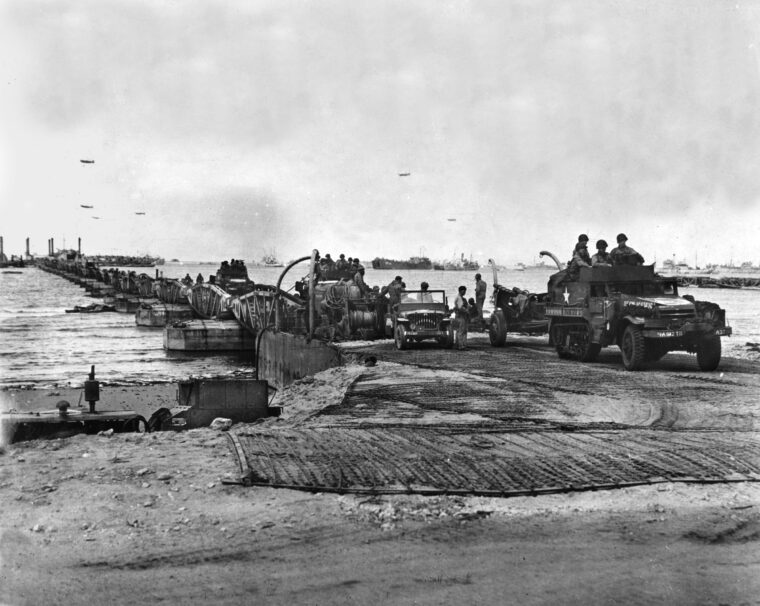
Dwight D. Eisenhower
No Allied amphibious invasion in World War II left such a bitter legacy as Operation Jubilee, the ill-fated British-Canadian raid on the northern French port of Dieppe on Wednesday, August 19, 1942. Read more
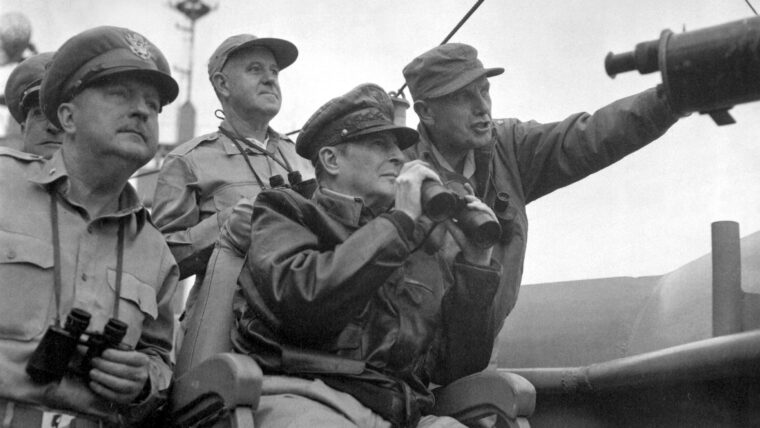
Dwight D. Eisenhower
In his 1964 book Gen. Douglas MacArthur (Gold Medal Books, Greenwich, Conn.), Bob Considine writes, “MacArthur’s final plan for winning the Korean War was outlined to this reporter in the course of an interview in 1954 on his 74th birthday. Read more
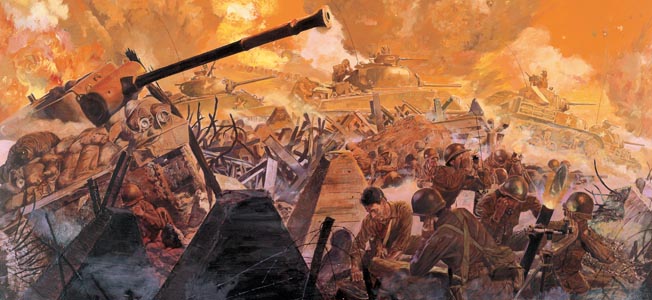
Dwight D. Eisenhower
The road to Fort Driant began for the United States Third Army when it landed on Utah Beach at 3 pm on August 5, 1944. Read more
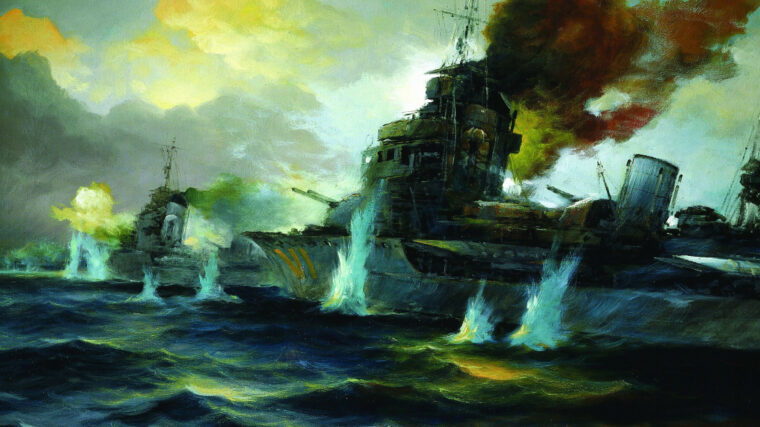
Dwight D. Eisenhower
On May 13, 1943, nearly 300,000 Axis soldiers surrendered to the Allies in northern Tunisia. This successful conclusion to the North African campaign led to speculation at the time as to where the Allies would strike next. Read more
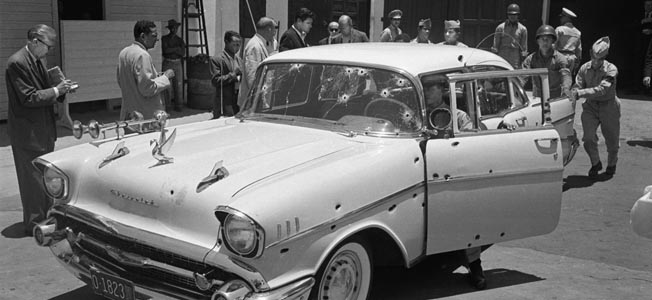
Dwight D. Eisenhower
From 1959 to 1961, the United States turned its focus to two of the most charismatic, ruthless, and despotic rulers in the Caribbean region, Fidel Castro of Cuba and Rafael Trujillo of the Dominican Republic. Read more
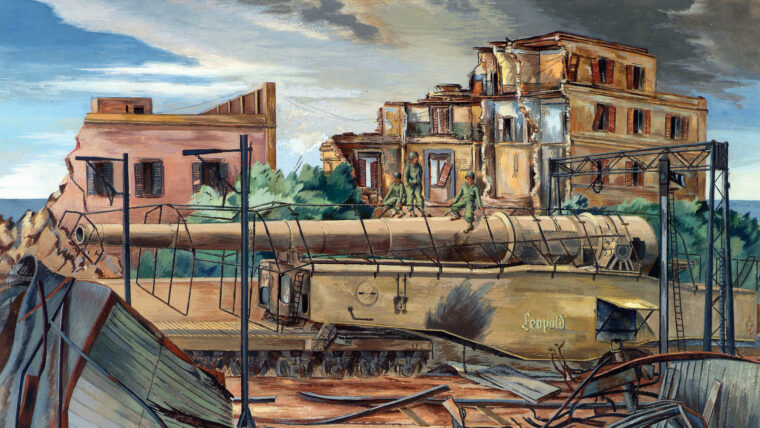
Dwight D. Eisenhower
As the last days of 1943 slipped away, World War II in Italy ground to a miserable stalemate. Read more
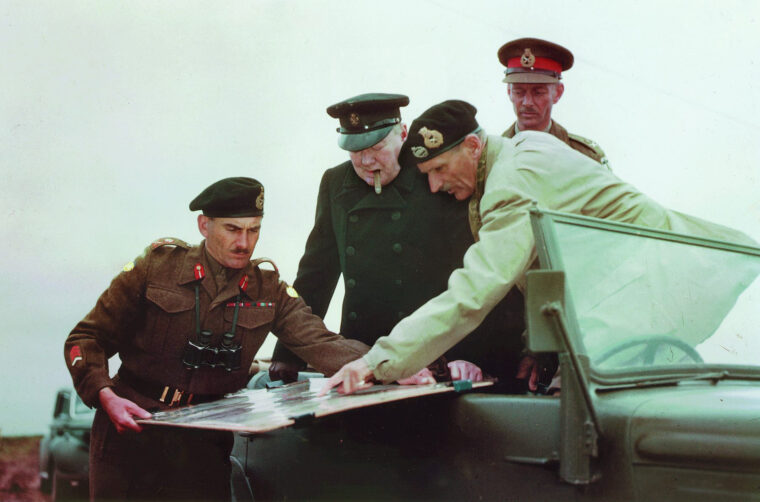
Dwight D. Eisenhower
In an August 14, 1944, General Bernard L. Montgomery was facing a manpower crisis, unable to drive the Germans out of Caen. Read more
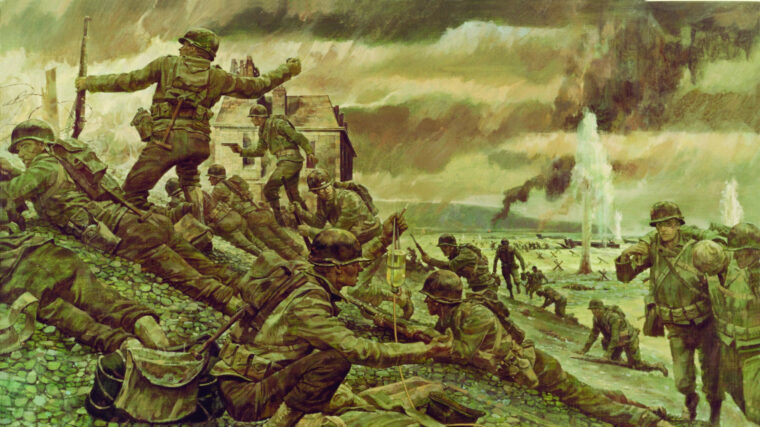
Dwight D. Eisenhower
The U.S. 29th Infantry Division was formed in July 1917, three months after America entered World War I. Read more
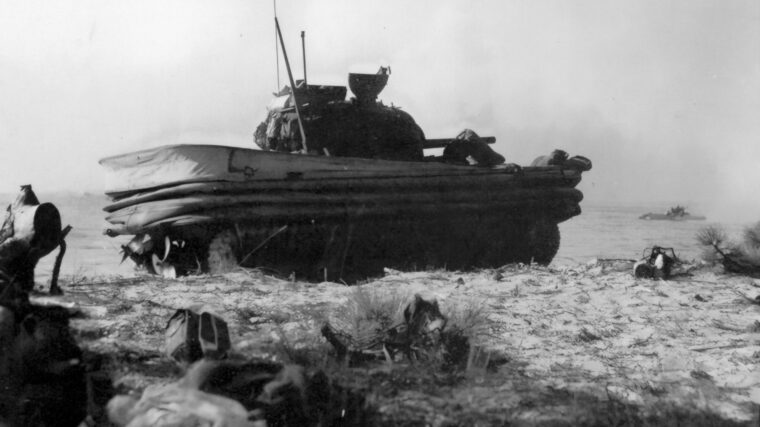
Dwight D. Eisenhower
German defenders hunkered in their concrete and steel bunkers along the Normandy coast were in for two major shocks on Tuesday, June 6, 1944. Read more
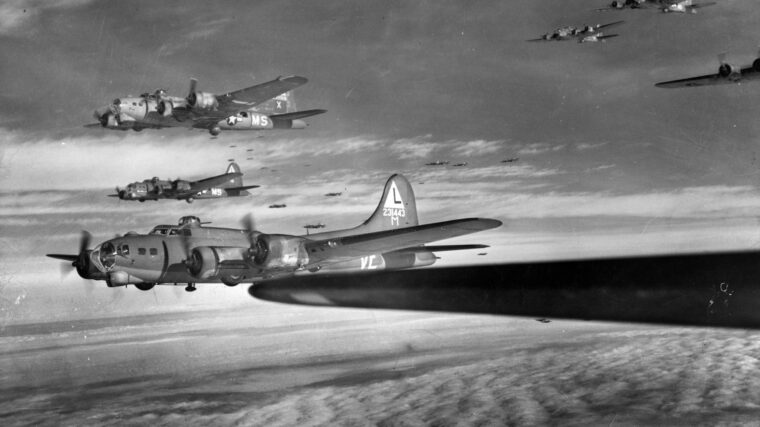
Dwight D. Eisenhower
The following story describes one of our air raids when I was piloting a Boeing B-17 Flying Fortress during World War II. Read more
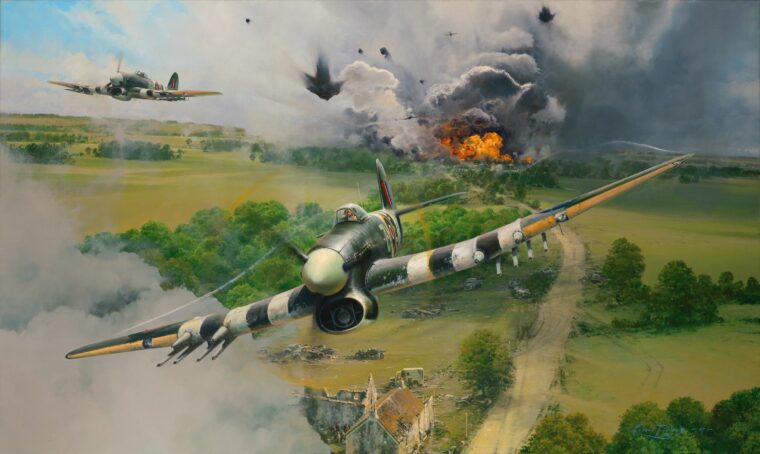
Dwight D. Eisenhower
From the Supermarine Spitfire to the North American P-51 Mustang, and from the Soviet Yak series to the Vought F4U Corsair, the Allies were able to field a formidable array of fighter planes against the Axis powers in World War II. Read more
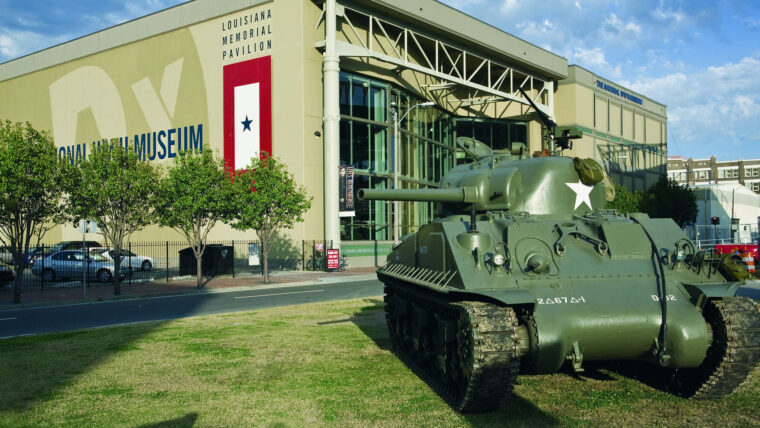
Dwight D. Eisenhower
Opened on June 6, 2000, on the 56th anniversary of the D-Day landings, the National D-Day Museum, as it was then known, initially focused on the amphibious invasion of Normandy. Read more